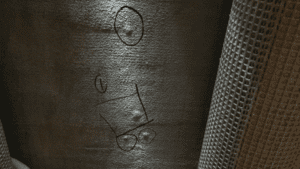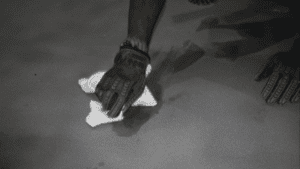
Protecting the E-coat Process in the Automotive Industry
SME | Published on October 18, 2024

Do you ever think about the paint on your car? When a car comes fresh off the line, there’s a component to thank for doing a unique job under the paint. Before the car is painted, it’s covered with a special primer to prevent corrosion. This protective layer is applied through electrocoating, or e-coating, a process that sends an electric charge through the primer to attract it to metal. The primer protects against rust and clings stubbornly to its substrate, even if the paint chips off.
E-coatings Are Essential for Car Production
E-coat is widely used to protect home appliances, furniture, light fixtures, sporting equipment, radiators, and more. Likewise, it’s the most cost-effective and consistent way to apply primer to vehicles. To apply the coating, carmakers run vehicles through an extensive tank filled with anodes that send an electrical charge to guide the primer to the right places. Each vehicle is dipped and rotated in the tank to get an even coat of primer.

The overall e-coat tank interior.
E-coat Liner Systems Require Attention to Detail
The liner system requires meticulous attention and preparation to function properly, and the smallest irregularity can cause it to degrade and fail at a rapid pace, incurring emergency shutdowns that cost millions of dollars. For instance, a few drops of sweat from tank installation personnel can lead to surface corrosion within a few hours and also cause blistering in the liner because the salt in sweat attracts water. Any rust and uneven surfaces disrupt the normal flow of electrical current, causing inconsistencies in the e-coat process.

Small blisters in the tank liner caught early enough for a minor repair.
SME’s Expertise in E-coat Solutions
SME’s work on e-coat liners goes back well over a decade, when we were hired by one of the biggest auto companies to write a specification for its new liner installation after a series of frustrating systems failures. Not only did we write the specifications, we performed oversight during the installation. Since then, we’re an integral part of the installation, oversight, and maintenance process for e-coat tank liners, which can last for well over 20 years if properly maintained.

Wiping away sweat with a tank-friendly solvent.
The Benefits of Maintaining E-coat Tank Liner Condition
A thorough maintenance process fends off tank failure, which can shut down assembly lines for weeks. Because electricity flows through the entire tank, our maintenance crews examine every possible gap, corner, and space. An uneven surface or an irregularity in the paint can redirect electricity away from the vehicle, reducing the effectiveness of the e-coat. Checking the welds is essential as well because the tank can pop off a bad weld during production.

High voltage testing around installed brackets.
The E-coat Tank Preparation Process
The tank interior also must be immaculately clean to reach the industry standard known as SP 5 Near White. Cleaning the liner to this standard involves blasting abrasive material (such as glass particles) to remove dust, debris, and mill scale.
After the tank is clean, we oversee the application of a protective primer. This keeps the steel from rusting while the crews of skilled applicators begin the multistep process of applying the 1/8” thick, fiberglass-reinforced liner system. The applicators put the base coat on with a trowel, similar to plaster. The process requires multiple coats plus a fiberglass mesh layer, and the result prevents electricity from grounding to the tank’s metal walls. The final step is for our team to run electricity across the surface and check that electricity isn’t being drawn to the tank through tiny pinholes known as “holidays” in the liner’s surface.

Applying the base coat of the liner to the tank.
Coordinated E-coat Services Minimize Manufacturing Downtime
Installing or maintaining a liner can take several days. Because of this, our team works with auto companies to meet their planned shutdown schedule, which is often during holiday breaks. We assist during this critical maintenance period so manufacturers can minimize downtime and get their equipment up and running properly. When our team leaves, manufacturers can go back to doing what they do best: producing the vehicles that keep us all moving forward.

A tank with a finished liner topcoat.
Each of SME’s service groups combine passion and expertise to create practical solutions. Electrocoat liners receive care from our Steel, Coatings, and Nondestructive Testing (SCN) team. Learn more about how the SCN group builds and revitalizes our world.





